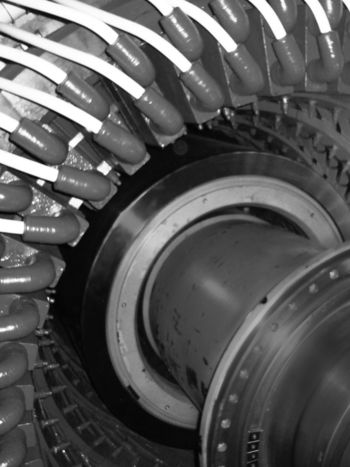Condition evaluation and lifetime strategy of HV cable systems
A suitable remaining life management strategy is crucial for avoiding both premature and delayed decommissioning and replacement of assets, and therefore optimizing their usage. For high voltage underground cable systems, a multitude of different factors from various categories determine their end of life: technical reasons such as ageing and, ultimately, failures are a sufficient criterion and need to be taken into account at all times. This requires a thorough understanding on the underlying physical ageing mechanisms, as well as a reliable and current set of condition data for each asset.
Members
Convenor (NL)
J. SMIT
Secretary (GE)
I. NETT
T. BANDURA (GE), I. BOEV (CA), R. BRADLEY (AU), G. CAPON (FR), S. CHRISTOU (GB), F. COCHET (CH), D. FRIEDLI (CH), I. KAMAL (FR), M. KLEIN (AT), P. LLOVERA-SEGOVIA (ES), D. MATEUS (PT), L. MOLIMBI (US), M. PAGANO (IT), S. STUL (BE), P. VAN DER WIELEN (NL), R. ZHANG (CH)
Corresponding Member
T. YOSHIMURA (JP)
Introduction
However, there may be economic or strategic reasons that justify the end of life of a system long before its technical condition requires replacement.
In addition, political and regulatory issues need to be considered to avoid heavy penalties or forced decommissioning.
A system that takes into account all of the above factors is unique to each country and utility. A generic approach was first introduced by CIGRE WG B1.09 in 2008 and published in TB 358, "Remaining Life Management of existing AC Underground Lines". Based on a two-step questionnaire, a score is calculated for each asset, allowing it to be categorized as requiring immediate attention ("red"), requiring close monitoring ("orange") or being uncritical ("green").
In 2018, it was decided to revise and, if necessary, update the system proposed in TB 358. Therefore, the Working Group B1.68 was formed. The objective was to collect past experiences on remaining life management in order to develop an updated approach suitable for extra high voltage and high voltage cable systems, both at AC and DC voltage. This update should also take into account new technologies that have emerged during the past years, which allow for more comprehensive and accurate condition assessment of power cable systems.
The aim of this Technical Brochure is therefore to reflect current practices for remaining life management and to evaluate the usage of the system presented in TB 358, to outline the various aspects that need to be considered when designing a remaining life management strategy, and to propose an exemplary method for determining the condition of a cable system and deriving the actions necessary to allow for timely repair or replacement actions.
Methodology
Based on feedback from 61 utilities on their approach to lifetime management and the use of the methodology proposed in TB 358, an updated concept is being developed. The proposed lifetime management system is derived from the reliability-centered maintenance (RCM) concept, i.e. both the condition and the criticality of a cable or cable system are taken into account when assessing the remaining lifetime. The method is fully customizable to the specific requirements and information available for each cable system and utility. It also conforms to the ISO 55000 series.
The condition can be expressed by a Health Index (HI), which assigns a number between 1 (very good condition) and 5 (very poor condition) to each asset under consideration. The HI can be further subdivided into specific indicators relating to measurement results obtained during on-line or off-line testing, cable age, maintenance aspects and failure rate. These sub-HIs are then combined in a weighted sum to calculate the overall HI. The choice of weighting factors is left to the reader of the TB, as this not only requires expertise and experience, but should also take into account the amount and reliability of available information and reflect the utilities' philosophy of asset management. It is recommended that the HI calculation is repeated periodically to track changes and ageing of the cable system so that a relationship of HI evolution over time can be established. It is also expected that the prediction of end of life will become more accurate over shorter periods of time.




